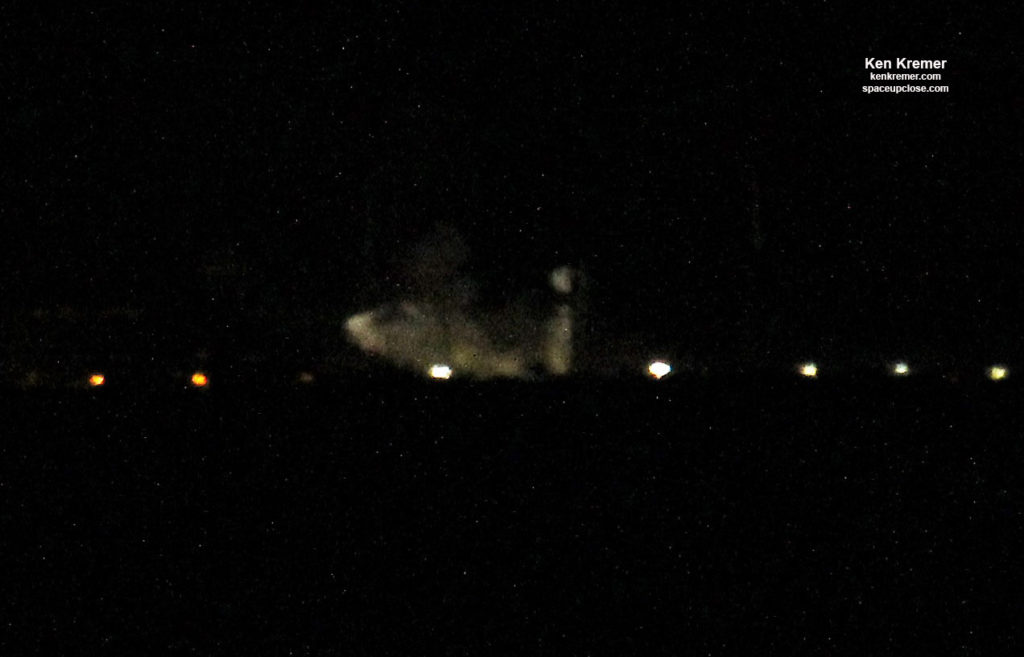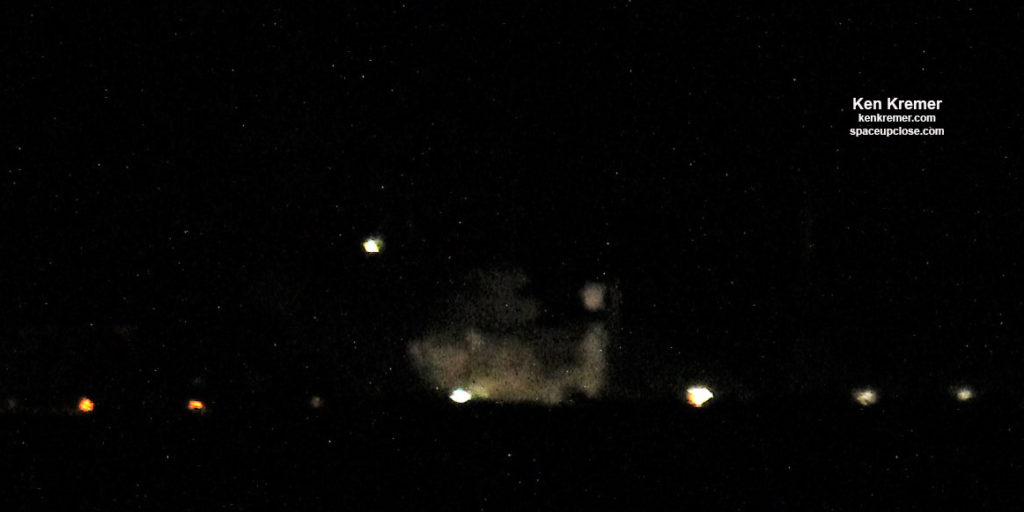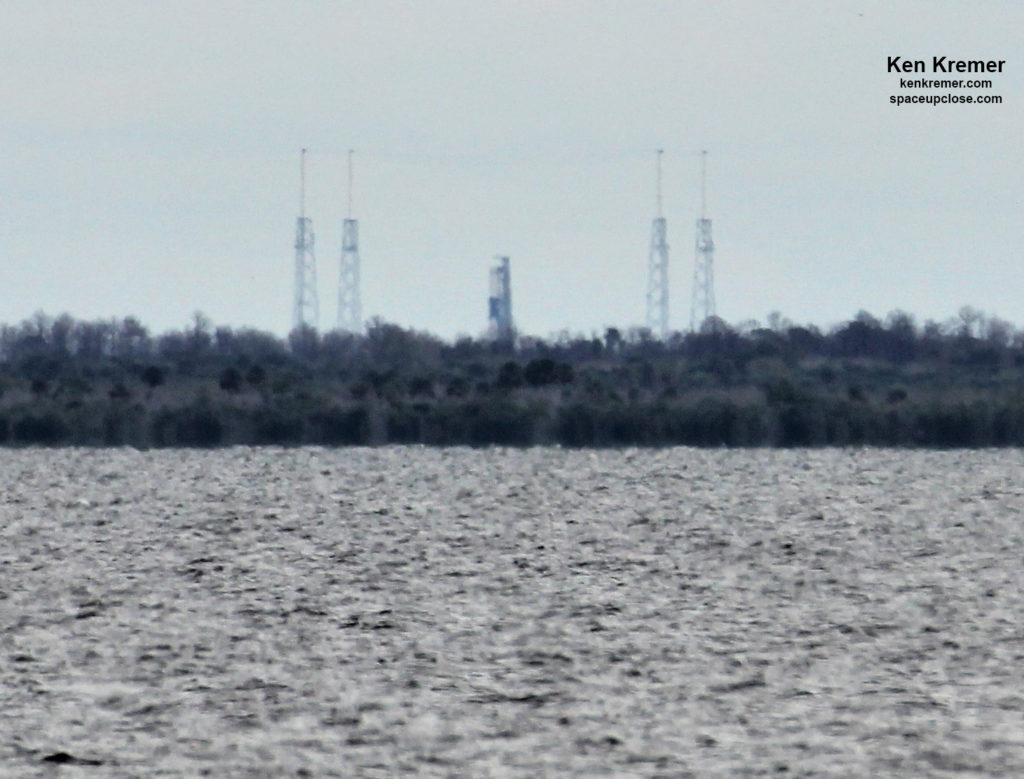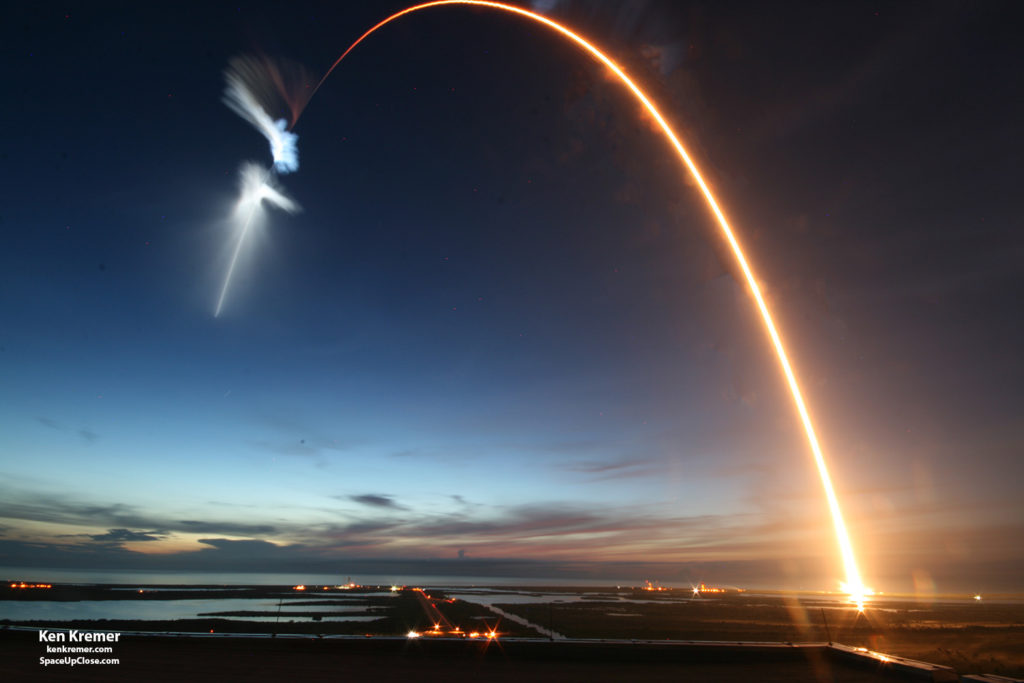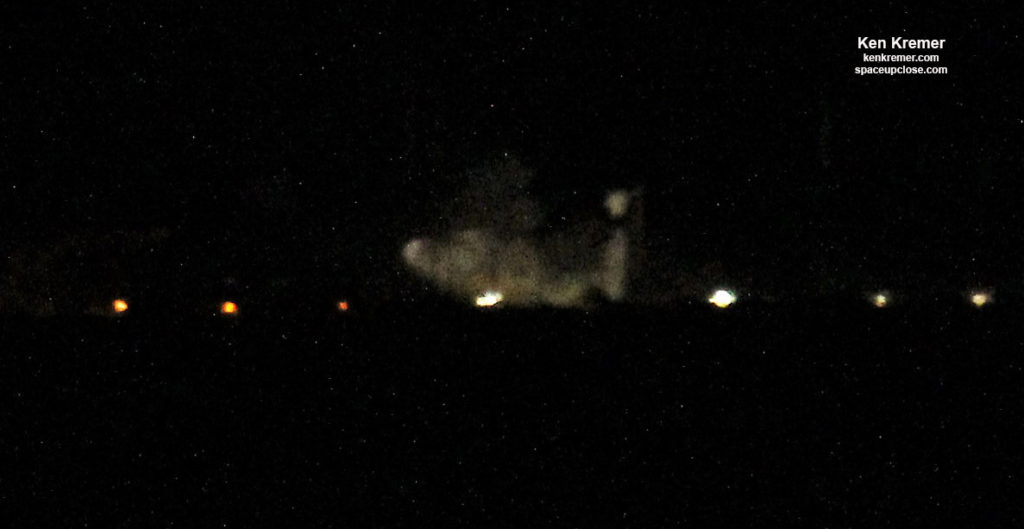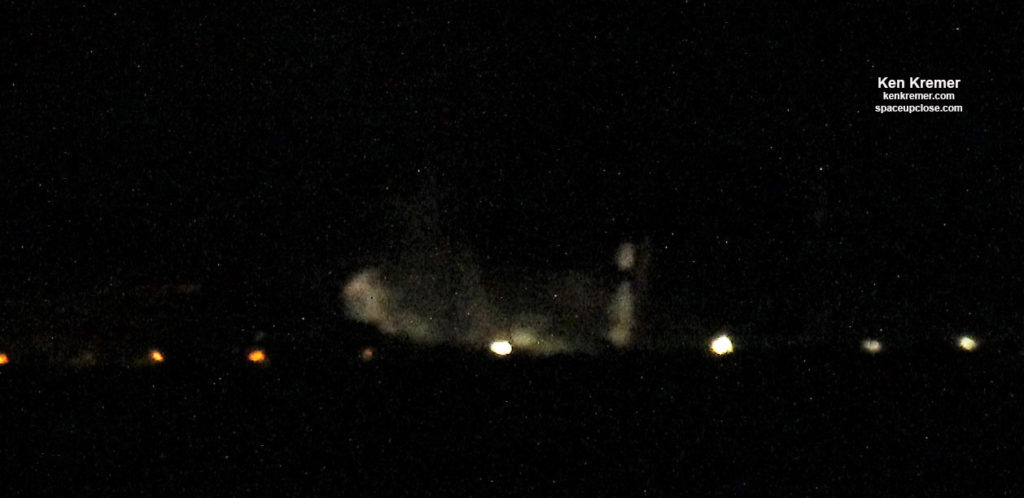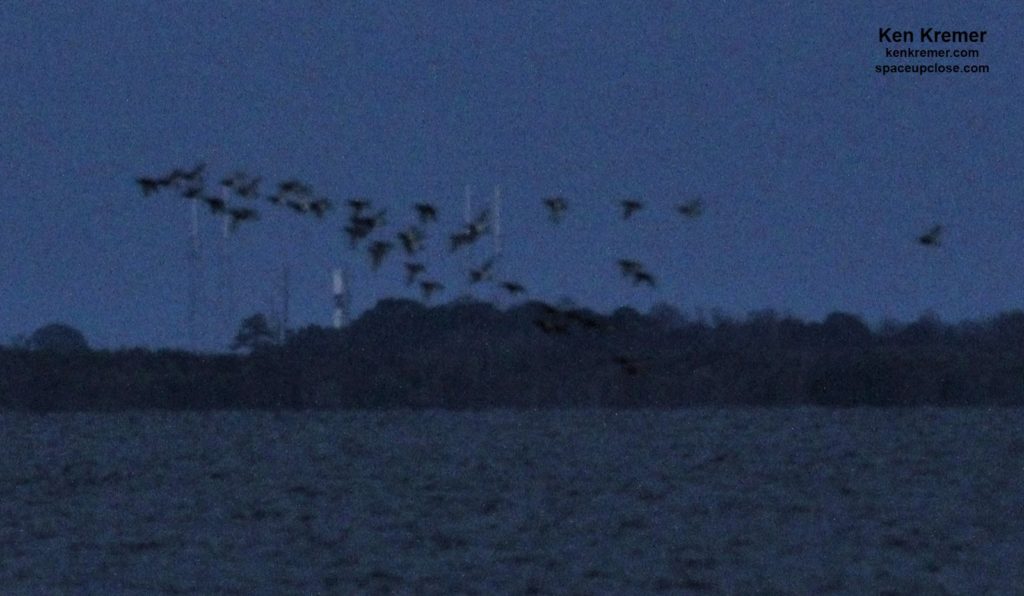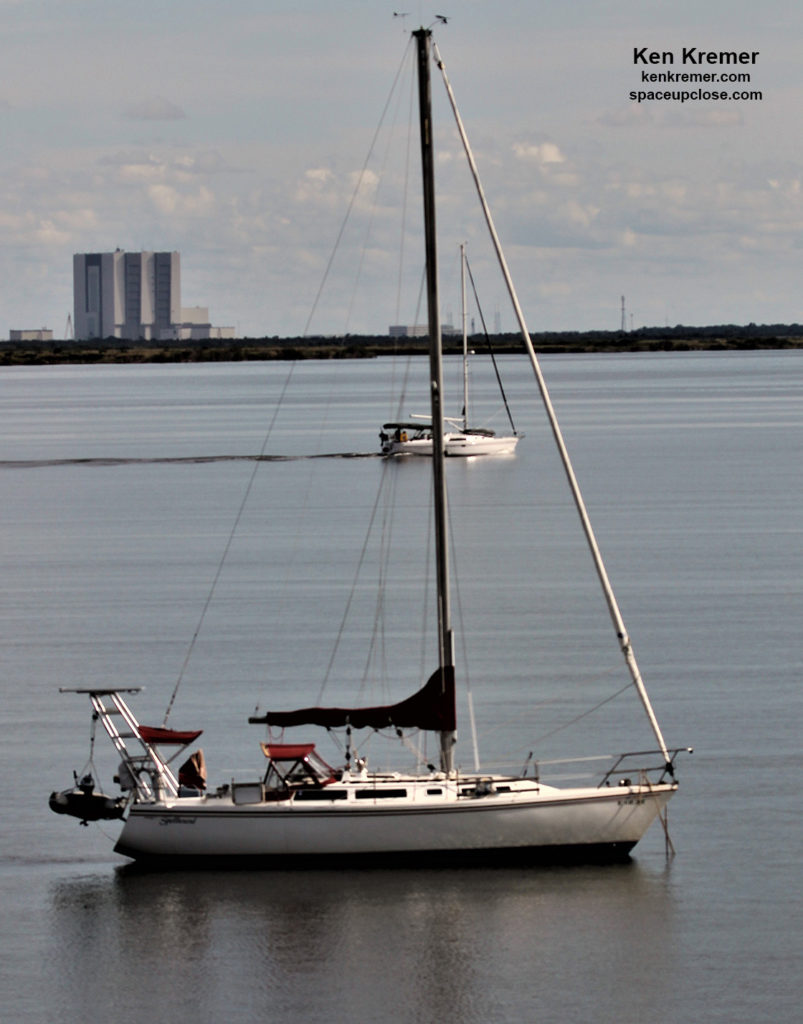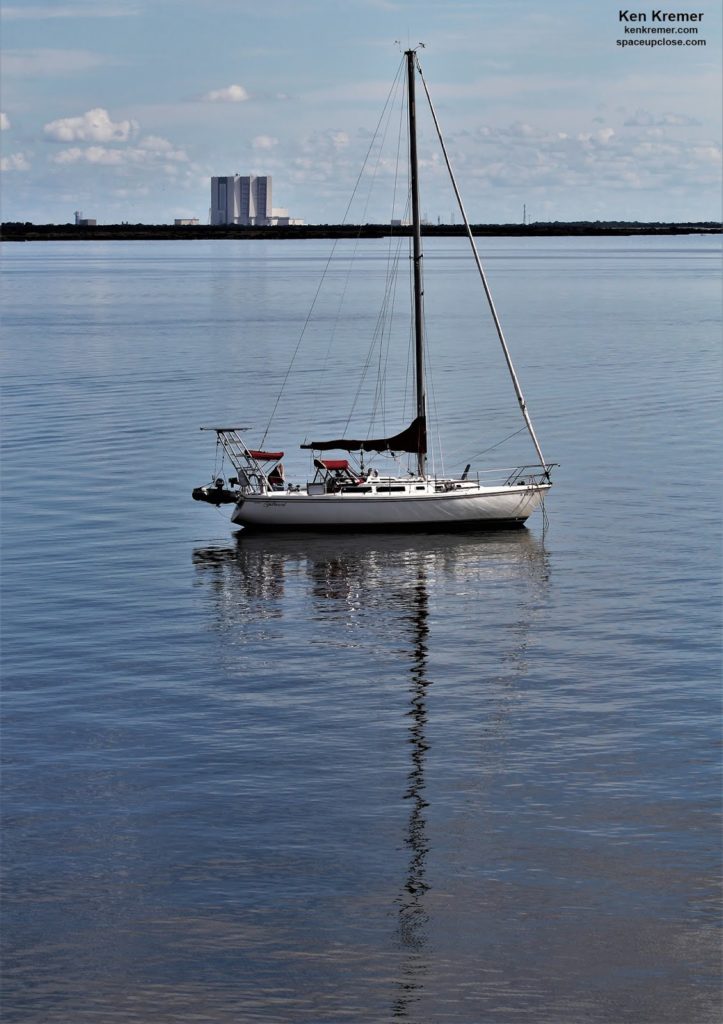RocketSTEM –30 November 2018
fired by SpaceX late Friday night (Nov 30) at Cape Canaveral launch pad 40 – clearing the way for a NASA
contracted commercial resupply mission to the International Space Station (ISS)
early next week from the Florida Space Coast on Tuesday. Thus begins a bicoastal
duo of blastoffs by SpaceX starting Sunday from California.
The brief static hot
fire involving ignition of all nine Merlin
1D first stage engines was carried out by
SpaceX engineers at 10:20 p.m. EST Nov. 30 (0320
GMT Dec. 1) on pad 40 at Cape Canaveral, Fl., using
a newly manufactured version of the upgraded Block 5 version of their workhorse
Falcon 9.
Check out my
exclusive Space UpClose eyewitness photos captured about 13 miles away in
Titusville, FL
Falcon 9 and Dragon CRS-16 commercial cargo freighter is now slated for Tuesday
afternoon December 4 at 1:38 p.m. EST (1838 GMT) from Space Launch Complex 40 at Cape Canaveral Air Force Station in
Florida.
SpaceX plan to
recover this Block 5 with a thrilling soft landing back at the Cape at Landing
Zone 1 some eight minutes after liftoff.
The rocket action
is part of a bicoastal SpaceX double header of launches from both US coasts
starting with Sunday’s liftoff of the first thrice used Falcon 9 from
Vandenberg AFB, Ca., on the commercial Spaceflight SSO-A mission carrying
64 smallsats. Window opens 10:32 a.m. PST Dec. 2.
Dragon CRS-16
marks SpaceX’s 16th cargo mission to the space station.
However Tuesday’s weather outlook is rather
iffy with only a 40 percent chance of acceptable conditions at launch time.
loaded with nearly 3 tons of science and supplies for the three person Expedition 57 crew currently living and
working aboard the ISS as well as three new crewmembers launching the day
before on Monday, Dec. 3 on a Russian Soyuz rocket and spacecraft from Baikonur.
payloads on board include:
refueling techniques in microgravity and the Global Ecosystem Dynamics Investigation lidar,
or GEDI for global forest measurement.
the positive test outcome by tweet about 40 minutes later.
Falcon 9 complete—targeting December 4 launch from Pad 40 in Florida for
Dragon’s sixteenth mission to the @Space_Station.”
of the Falcon 9 were rolled out and raised late Thursday morning at pad 40 at Cape Canaveral Air Force Station in
Florida.
static fire test is routinely carried by SpaceX to ensure all is ready with the
rocket.
engines were briefly ignited for several seconds.
static fire test, the rocket’s first and second stages are fueled with liquid
oxygen and RP-1 propellants just like an actual launch, and a simulated
countdown was carried out to the point of a brief engine ignition.
Luckily
the pad was illuminated, and I was able to observe a large
vapor cloud of exhaust emitted from the Falcon 9 first stage in the moments after
ignition. I heard the rockets engines
ruble several seconds later as the vapor cloud dissipated.
down engine test with the erected Falcon 9 rocket involved the ignition of all
nine Merlin 1D first stage engines generating some 1.7 million pounds of thrust
at pad 40 while the two stage rocket was restrained on the pad – minus the
Dragon payload.
The rocket will now be lowered horizontal and rolled back down the ramp and returned to the
pad 40 hanger to attach the Dragon cargo spacecraft.
This Dragon is refurbished and recycled and previously flew
on the CRS-10 mission to the station.
The 20-foot
high, 12-foot-diameter Dragon CRS-16 vessel is jam packed with more than 5,673 pounds (about 2,573 kilograms) of science
experiments, research hardware, space parts, food water, clothing and more
supplies for the five person Expedition 57 and 58 crews.
If all goes well on its second launch Dragon will arrive at
the orbiting outpost on Dec. 6 and be captured by the crew for installation on
the Harmony module for a month long stay.
ESA Astronaut and Expedition 57 Commander Alexander Gerst of Germany and NASA Astronaut Serena Auñón-Chancellor from America will operate the 57
foot long Canadian-built Canadarm2robotic arm to grapple Dragon.
The prior CRS-15 resupply flight successfully flew in June
from pad 40.
The two stage Falcon 9/Dragon rocket stands
about 213-feet (65-meters) tall.
To date SpaceX has successfully landed 31 1st
stage rockets by land and by sea. And they have reused 17 of those 15 story
tall boosters since the first relaunch in March 2017 relaunch for SES.
SpaceX was awarded a $3.04
Billion contract from NASA to launch 20 Dragon cargo missions to the orbiting outpost through
2019 under the Commercial Resupply Services
(CRS) agreement.
continuing onsite coverage of NASA, SpaceX, ULA, Boeing, Lockheed Martin,
Northrop Grumman and more space and mission reports direct from the Kennedy Space
Center, Cape Canaveral Air Force Station, Florida and Wallops Flight Facility,
Virginia.
and human spaceflight news: www.kenkremer.com –www.spaceupclose.com – twitter
@ken_kremer – email: ken at kenkremer.com
scientist, journalist and photographer based in the KSC area.
Ken’s photos are for sale and he is available for lectures and outreach events
Learn more about the upcoming upcoming/recent
SpaceX Falcon 9/CRS-16 launch to ISS, NASA missions, ULA Atlas & Delta
launches, SpySats and more at Ken’s upcoming outreach events at Kennedy Space
Center Quality Inn, Titusville, FL, evenings:
1,3,4: “SpaceX Dragon CRS-16
resupply launch to ISS, SpaceX Falcon Heavy & Falcon 9 launches, upcoming SpaceX
Falcon 9 USAF GP3 3-01, NRO & USAF Spysats, SLS, Orion, Boeing and SpaceX
Commercial crew capsules, OSIRIS-Rex, Juno at Jupiter, InSight Mars lander,
Curiosity and Opportunity explore Mars, NH at Pluto, Kuiper Belt and more,” Kennedy Space
Center Quality Inn, Titusville, FL, evenings.
Photos for sale


